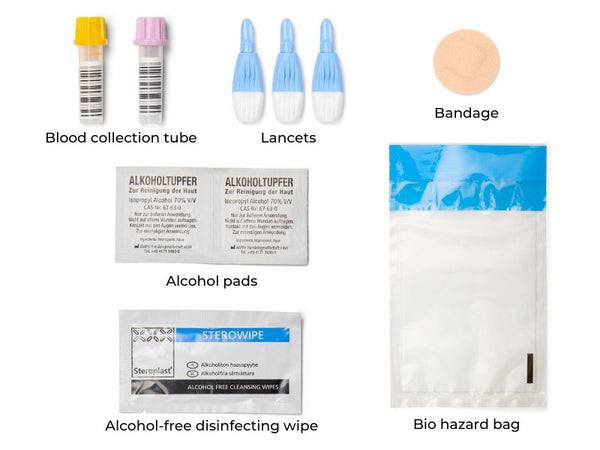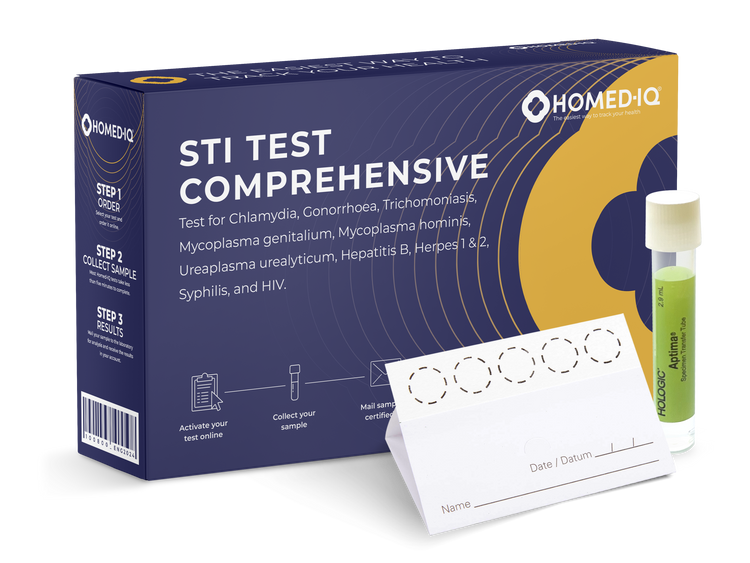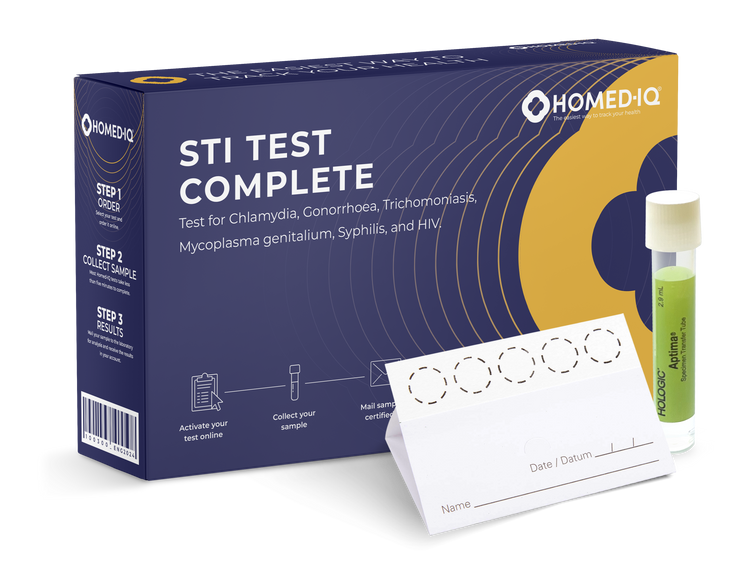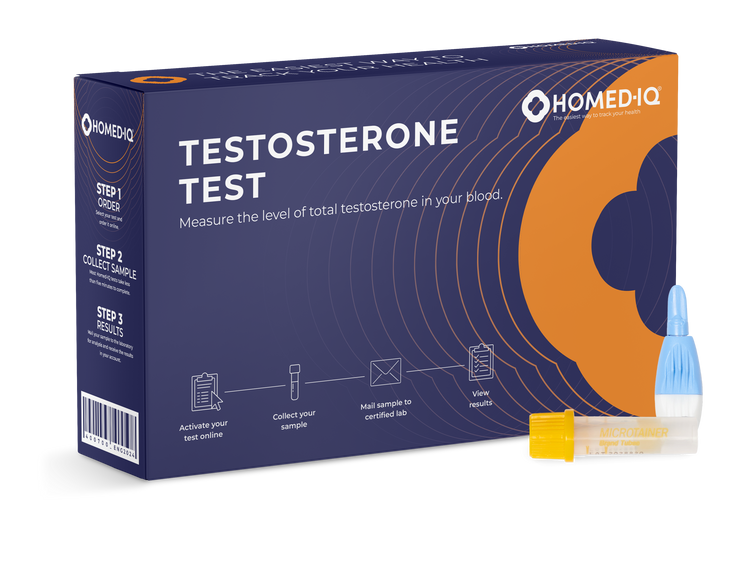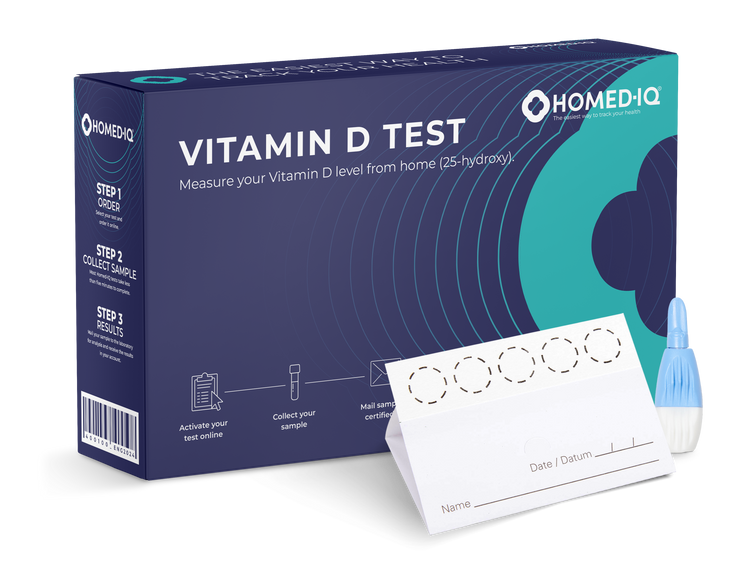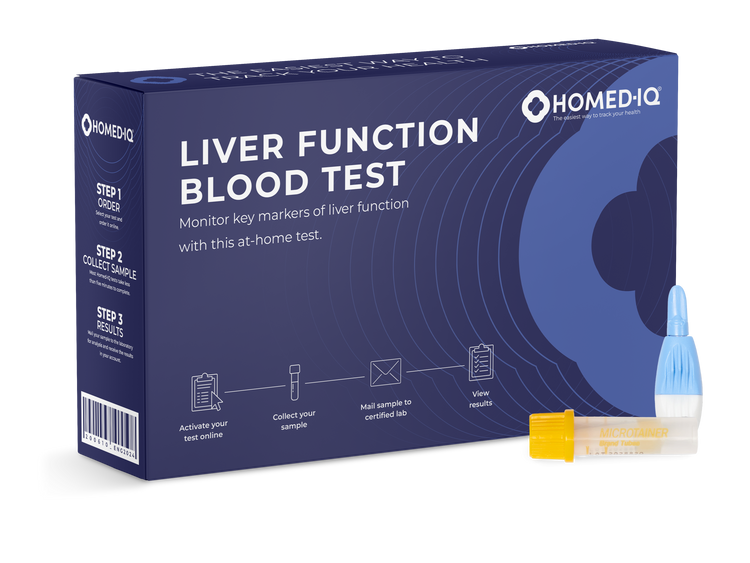Cholesterol
Cholesterol is produced in the liver and is found in every cell of the body. There are two types of cholesterol: one in the form of HDL (high-density cholesterol) and LDL (low-density cholesterol). HDL is also referred to as the ‘good’ cholesterol and LDL is known as the ‘bad’ cholesterol. An elevated cholesterol level is defined as total cholesterol above 6.5 mmol / l.
HDL
High-Density Lipoprotein (HDL) is a type of lipoprotein found in the blood. It is often referred to as “good cholesterol” because it helps remove other types of cholesterol from the bloodstream. This helps to prevent the buildup of excess cholesterol in the arteries, reducing the risk of atherosclerosis (hardening and narrowing of the arteries) and cardiovascular diseases.
Having higher levels of HDL in the blood is generally considered beneficial for heart health, as it helps to counteract the negative effects of LDL (Low-Density Lipoprotein) cholesterol, often referred to as “bad cholesterol.” Regular exercise, a healthy diet, and not smoking can help increase HDL levels. To learn more about HDL, and which levels of HDL are considered normal/healthy, we recommend you to check out our article “What is HDL?”.
LDL
Low-Density Lipoprotein (LDL) is often referred to as “bad cholesterol” because elevated levels of LDL can lead to the buildup of cholesterol in the arteries. When there is excess LDL in the bloodstream, it can deposit cholesterol on the arterial walls, forming plaques. Over time, this can narrow and block the arteries, a condition known as atherosclerosis, which increases the risk of cardiovascular diseases like heart attacks and strokes.
High LDL levels are often associated with an unhealthy diet, lack of exercise, smoking, and other factors related to an unhealthy lifestyle. Lowering LDL cholesterol through lifestyle changes, medications, or a combination of both can help reduce the risk of cardiovascular diseases and improve overall heart health.
HDL% of total cholesterol
HDL% of total cholesterol refers to the percentage of High-Density Lipoprotein (HDL) cholesterol in relation to the total cholesterol present in the blood. Cholesterol is carried in the bloodstream by different types of lipoproteins, including HDL and Low-Density Lipoprotein (LDL). HDL is considered “good cholesterol” because it helps remove excess cholesterol from the arteries and transports it back to the liver for processing and elimination.
A higher HDL% of total cholesterol indicates a relatively higher proportion of protective HDL cholesterol in the blood compared to total cholesterol. This is generally considered beneficial for heart health, as it helps counteract the negative effects of LDL cholesterol, often referred to as “bad cholesterol.” A higher HDL% is associated with a lower risk of cardiovascular diseases, such as heart attacks and strokes.
Triglycerides
Triglycerides are a type of fat found in the blood. They are the most common form of fat in the human body and serve as a source of energy for various bodily functions. When you eat, your body converts the calories it doesn’t need into triglycerides, which are then stored in fat cells. Between meals, hormones release triglycerides for energy, ensuring a continuous supply of fuel for various metabolic processes.
While triglycerides are essential for normal body function, elevated levels can pose health risks. Elevated triglycerides, along with high LDL cholesterol and low HDL cholesterol, are considered risk factors for cardiovascular diseases. Lifestyle changes, including adopting a healthy diet, regular exercise, and weight management, can help maintain triglyceride levels within a healthy range and reduce the risk of cardiovascular problems.
HbA1C
The term HbA1c stands for ‘hemoglobin A1c,’ also known as glycated hemoglobin. Hemoglobin, a protein in red blood cells that gives them their color, carries oxygen from the lungs to the rest of the body. Glucose (sugar) in the blood can attach to hemoglobin, forming what is known as glycated hemoglobin. Thus, the more glucose in the blood, the more glycated hemoglobin is present. Since red blood cells, and therefore the hemoglobin within them, have a lifespan of up to 120 days, an HbA1c value provides an insight into the average blood glucose level over the past 10 to 12 weeks. The higher the glucose level in the period before the test, the higher the HbA1c value will be.
Thyroid Stimulating Hormone (TSH)
Thyroid Stimulating Hormone (TSH) is produced in the pituitary gland in the brain. TSH regulates the production of hormones T3 and T4 by the thyroid gland. Thyroid hormones regulate body functions such as metabolism, energy production, body temperature regulation, digestion, and growth. Either too much or too little TSH can indicate problems with the thyroid, such as hyper – or hypothyroidism. An imbalance in thyroid hormones can cause changes in weight, mood, and energy levels.
![Woman in professional cozy kitchen with Homed-IQ test kit]() 1
1![]() 2
2![]() 3
3![]() 4
4
